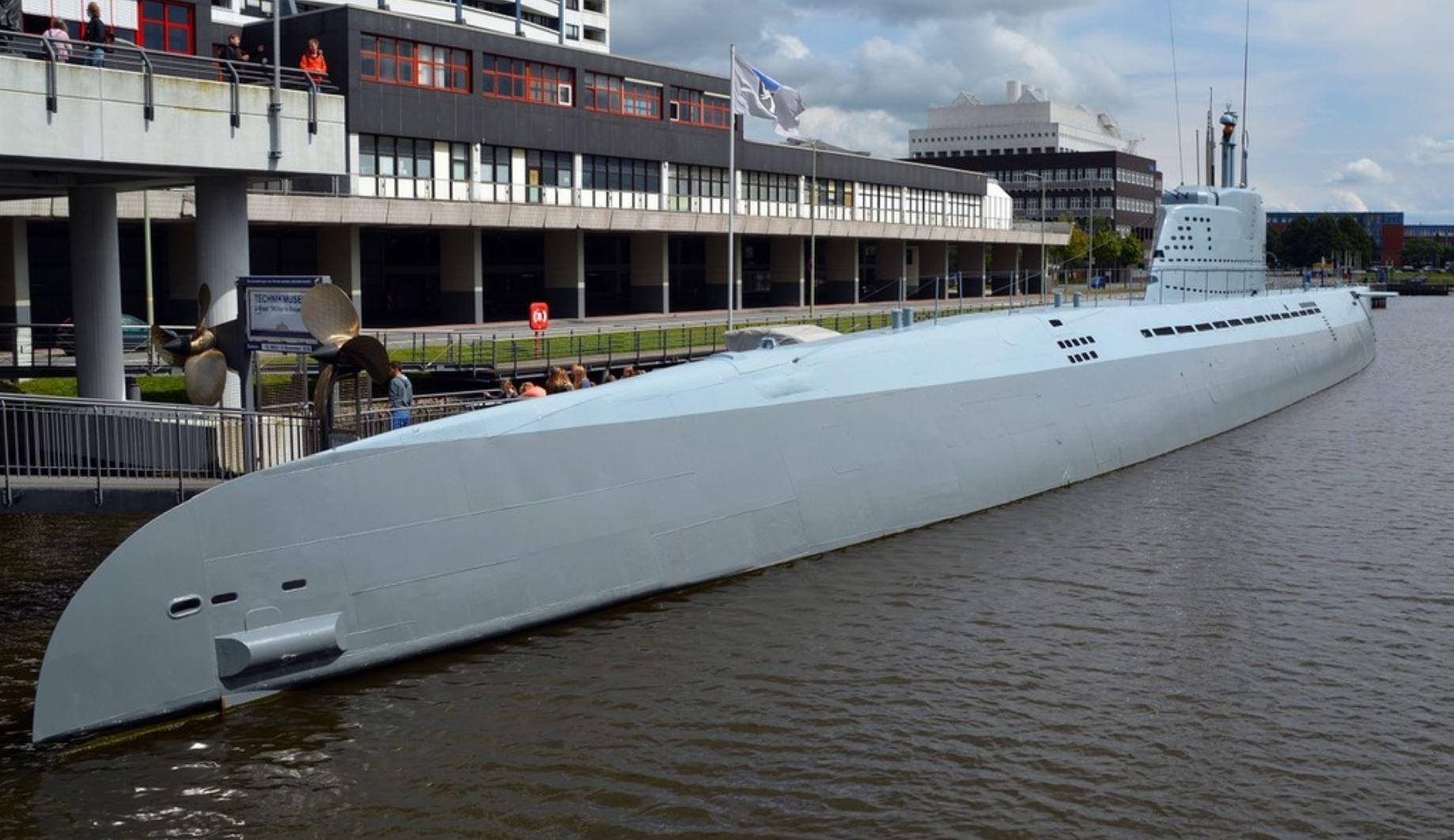
Wilhelm Bauer (U-2540) is on display at the Maritime Museum in Bremerhaven, Germany. In 1983, it was restored to its original Second World War configuration and is the only floating example of a Type XXI U-boat. [Wikimedia]
The sub was sunk at 10:04 a.m. by ship guns and depth charges, the last of 116 scuttled by the Royal Navy.
In anticipation of the end of the war in early May 1945, German U-boat captains began scuttling their own boats, preventing an estimated 200 from falling into the hands of the Allies. On May 4, the German Navy ordered all U-boats to go to ports in Norway. On May 8, there were 156 still afloat.
Their fate was sealed by an agreement among the Allies that sinking the vessels was more economic than scrapping them. The boats were gathered at Lisahall, Northern Ireland, and Loch Ryan in Scotland, but a great number (some sources say up to half) sank en route, victims of bad weather, deterioration or both.
Despite Britain’s determination that all U-boats should be sunk to eliminate the threat to postwar merchant shipping, some did survive. The United States, Soviet Union and Britain retained 10 each for research, and several were subsequently raised and/or salvaged and put to naval use, including one by the peacetime German navy, which kept it afloat until 1982 before putting it on display.
Only four U-boats remain on public display today, says the website militaryhistorynow.com. Parts of U-534 are on display at a waterfront park on the Mersey River in Liverpool, England; U-505 is on display at the Chicago Museum of Science and Technology; U-2540 is at the German Maritime Museum in Bremerhaven, Germany; and U-995 is a museum ship at the Laboe Naval Memorial near Kiel, Germany.
Advertisement



















